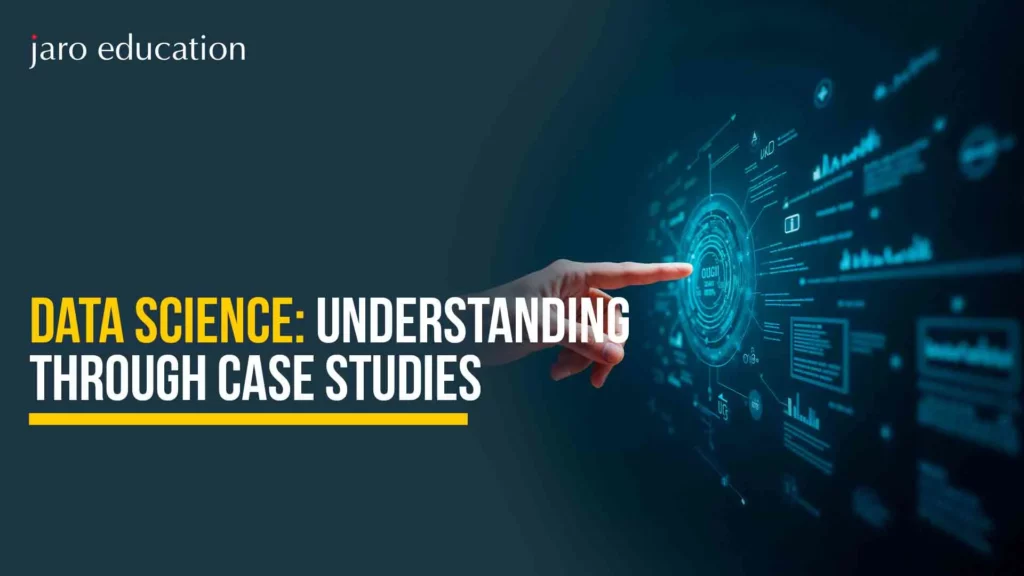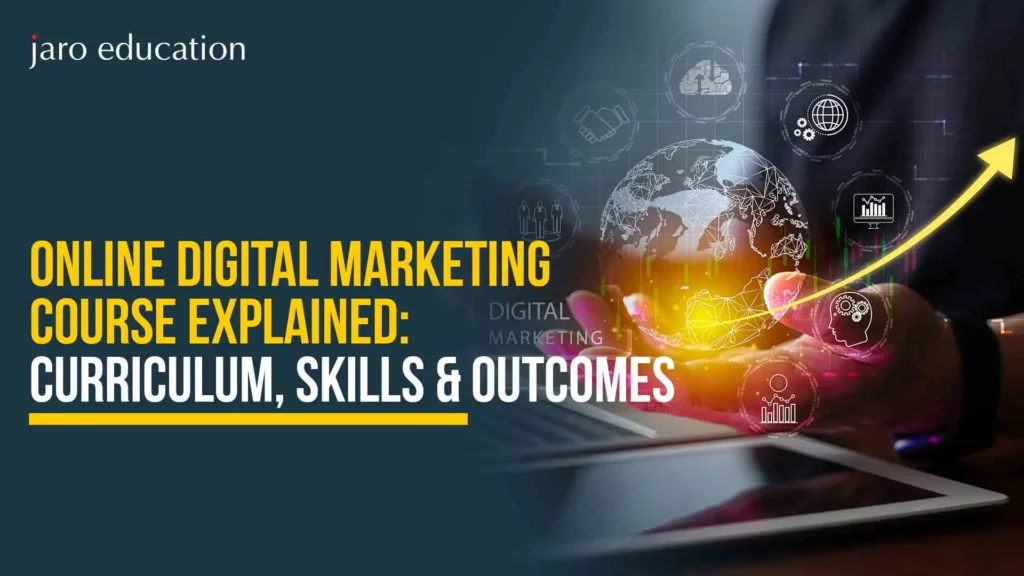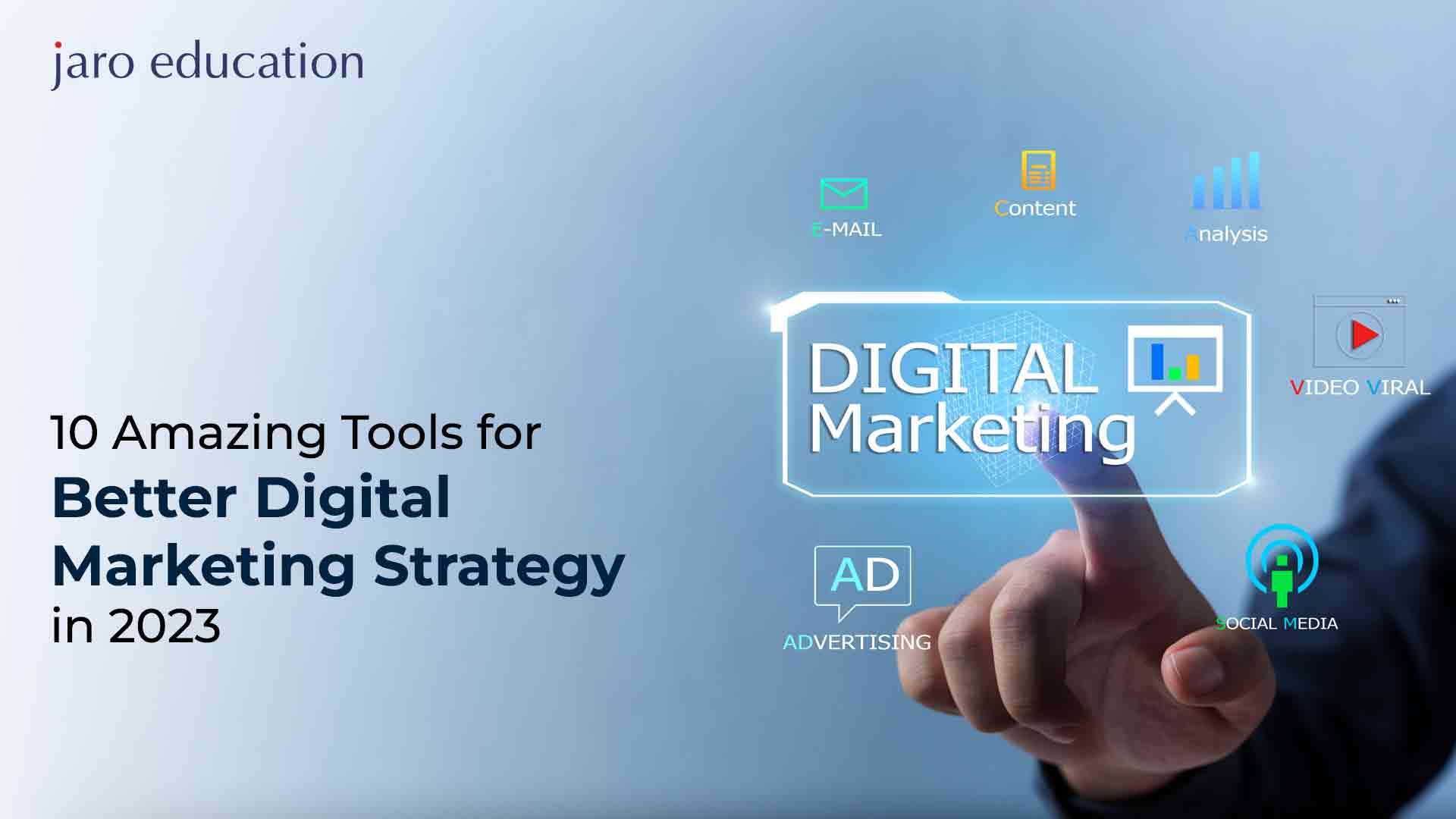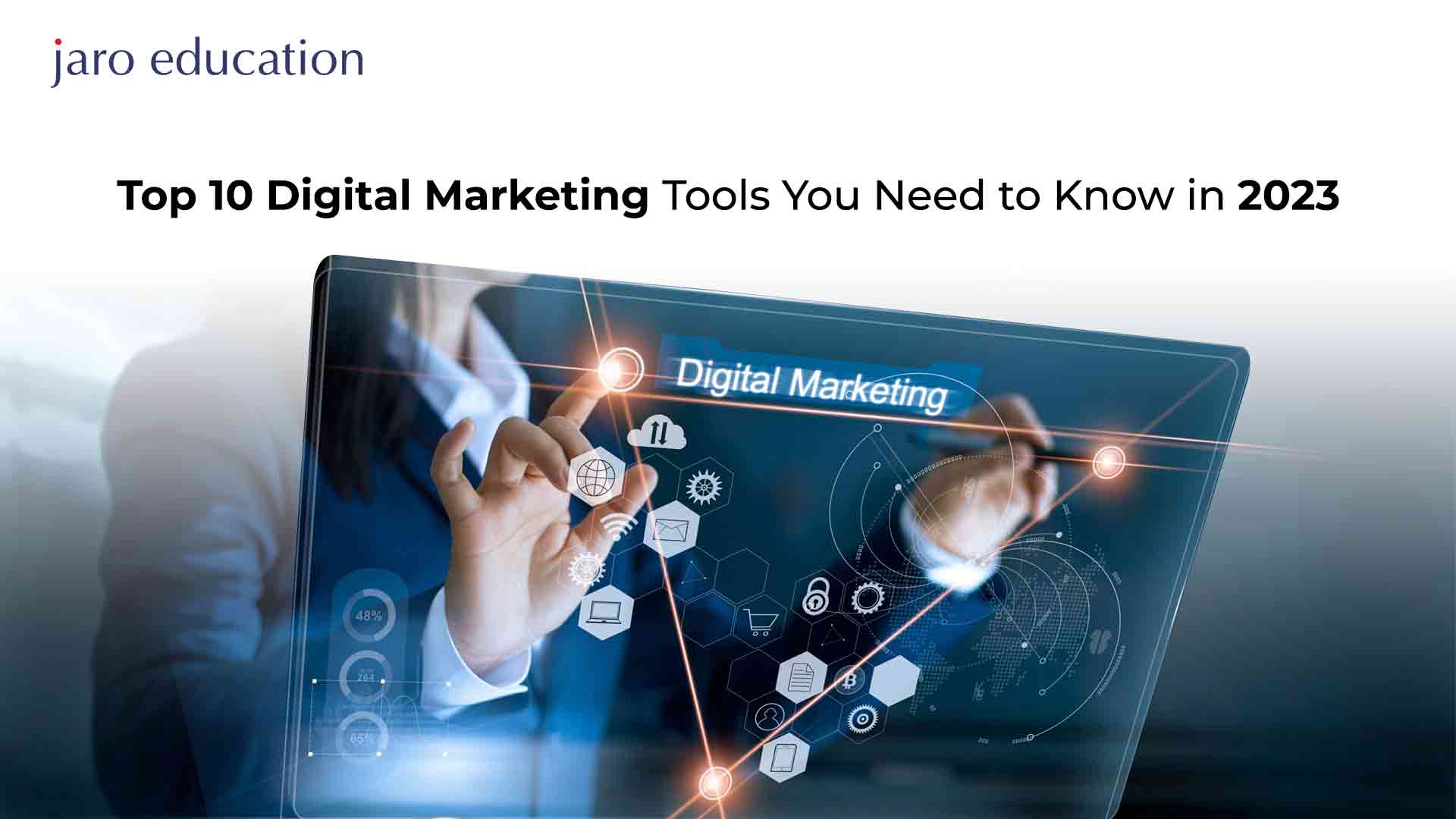Top 50+ SEO Interview Questions and Answers for 2023
Table of Contents
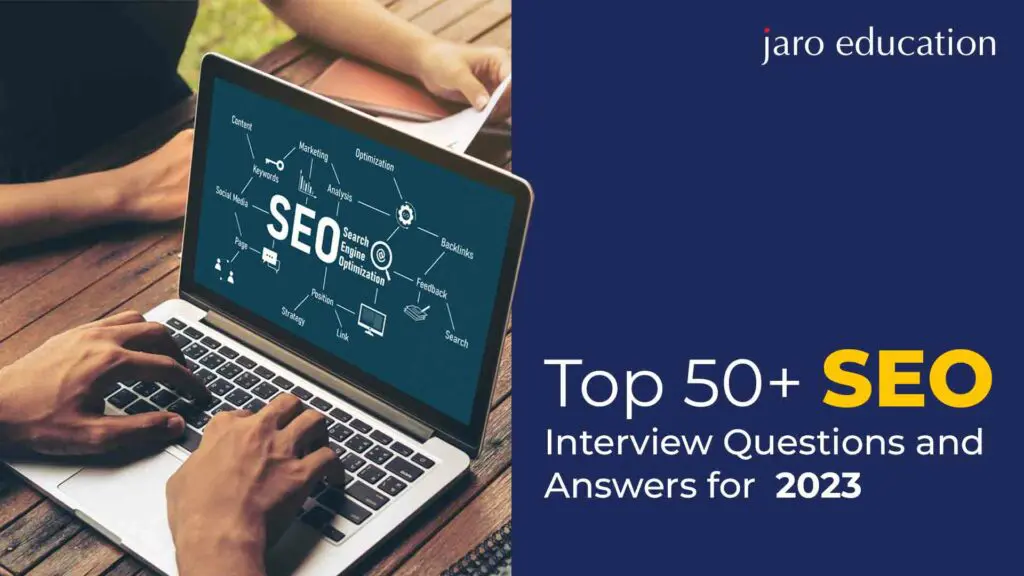
- jaro education
- 10, July 2023
- 3:00 pm
Digital Marketing has emerged as one of the most promising career paths in the contemporary world. Among the various skills within this field, Search Engine Optimisation (SEO) stands out as the most sought-after expertise. The following list of interview questions will provide you with a thorough understanding of the frequently asked SEO interview questions, regardless of whether you are a newbie or an experienced professional looking to land your dream job in SEO.
While the set of questions will increase the possibility of cracking an interview, a certification program will prepare you to tackle the challenges during as well as after the interview. You can take part in the PG Certificate in Digital Marketing and Growth at IIM Visakhapatnam if you want to succeed in the continuously evolving digital industry. By joining right away, you can get ready to realise your full potential and succeed in digital marketing.
Frequently Asked SEO Interview Questions
Q1. What is SEO?
SEO stands for Search Engine Optimisation. When a website or web page is optimised, it raises its exposure and rating on search engine result pages (SERPs), which increases organic (non-paid) traffic.
Q2. What are the key components of SEO?
The critical SEO components include keyword research, on-page optimisation, off-page optimisation, technical SEO, and user experience.
Q3. Distinguish between organic and paid results.
Organic results are the natural listings on search engine result pages that appear based on their relevance to the search query. On the other hand, Paid results are advertisements that website owners pay for to appear at the top or side of the SERPs.
Q4. What is a keyword?
Keywords are words or phrases users enter into search engines to find information. In SEO, keyword research identifies and selects relevant keywords for optimising a website’s content.
Q.5 How do search engines affect the ranking of websites?
Search engines use complex algorithms that consider various factors, like relevance, authority, and user experience, to determine the ranking of websites. These algorithms analyse on-page and off-page factors to determine the most relevant and valuable pages for a search query.
Q6. What is on-page optimisation?
On-page optimisation refers to optimising individual web pages to improve search engine rankings. It optimises page titles, meta descriptions, headings, content, URL structure, and internal linking.
Q7. What is off-page optimisation?
Off-page optimisation involves actions outside your website to improve its visibility and authority. It includes building backlinks, social media marketing, influencer outreach, guest blogging, and online reputation management.
Q8. Why are backlinks essential in SEO?
Backlinks are essential for SEO because search engines view them as a recommendation or vote of confidence for the information on your website.
Q9. Explain the importance of website speed in SEO.
Website speed is crucial for both user experience and SEO. Search engines consider website speed a ranking factor because fast-loading websites provide a better user experience. Slow-loading websites tend to have higher bounce rates and lower conversion rates.
Q10. Tell something about duplicate content and how does it affect SEO?
Duplicate content is identical or similar content on multiple web pages. Search engines strive to provide unique and valuable content to their users. Having duplicate content can confuse search engines and lead to lower rankings or penalties.
Q11. How do you optimise website URLs for SEO?
To optimise website URLs for SEO:
- Keep them short and descriptive
- Use relevant keywords
- Use hyphens to separate words
- Avoid using special characters, numbers, or dates in URLs
Q12. What is anchor text?
Anchor text is referred to as the visible, clickable text in a hyperlink. It helps search engines understand the topic or content of the linked page. Using descriptive and relevant anchor text for internal and external links is essential.
Q13. Explain the importance of social media in SEO.
While social media signals themselves may not directly impact SEO rankings, they can indirectly influence SEO performance. Social media increases brand awareness and attracts backlinks, all contributing to improved organic rankings.
Q14. How can you know the success of an SEO campaign?
The success of an SEO campaign can be measured using various metrics, including:
- Organic search traffic
- Keyword rankings
- Conversion rates
- Bounce rates
- Backlink profile
- Social media engagement
- Return on investment (ROI)
Q15. What are some popular SEO tools?
Popular SEO tools include:
- Google Analytics
- Google Search Console
- Moz
- SEMrush
- Ahrefs
- Yoast SEO (WordPress plugin)
- Screaming Frog
- Majestic SEO
Q16. What is a long-tail keyword?
A long-tail keyword is a specific, longer phrase with a lower search volume but higher intent and specificity. Targeting long-tail keywords can help drive targeted traffic and improve conversion rates.
Q17. Define Google Penalty.
When websites are seen to be breaking any Google rules, Google employees manually penalise them.
Q18. What is schema markup?
PSchema markup is a structured vocabulary of data that helps search engines understand the context of web pages. It uses standardised tags to provide additional information about elements on a page, like reviews, ratings, products, events, and more.
Q19. Describe the importance of user experience in SEO.
User experience is vital in SEO. A positive user experience leads to more extended site visits, lower bounce rates, and increased chances of higher rankings.
Q20. Difference between indexing and crawling.
Crawling is the process by which search engine bots visit and discover web pages online. On the other hand, indexing is the process of storing and organising the information from crawled pages into a searchable index.
Q21. How do you deal with website penalties?
If a website has been penalised by a search engine, the following steps can be taken:
- Identify the cause of the penalty (e.g., algorithmic or manual)
- Address the specific issue, such as removing low-quality content or spammy backlinks
- Submit a reconsideration request if the penalty was manual
- Focus on improving the overall website quality and compliance with search engine guidelines
Q22. What is a canonical tag, and when should it be used?
A canonical tag is an HTML element that tells search engines which version of a URL is preferred or canonical when there are multiple versions of the same page. It is used to prevent duplicate content issues and consolidate the SEO value of similar pages.
Q23. What is keyword proximity?
Keyword proximity refers to the separation or proximity of two keywords inside a body of content on a website. A sentence will be given more weight if its keywords are close.
Q24. Difference between XML sitemaps and HTML sitemaps.
XML sitemaps give search engines a list of URLs to crawl and index. They are created with this purpose in mind. On the other hand, HTML sitemaps are designed for human users and provide a hierarchical structure of the website’s pages for easy navigation.
Q25. Distinguish between indexing and ranking.
Indexing refers to adding web pages to a search engine’s index. It does not guarantee that the pages will rank highly in search results. Conversely, ranking is the order in which pages appear in search results based on their relevance and authority.
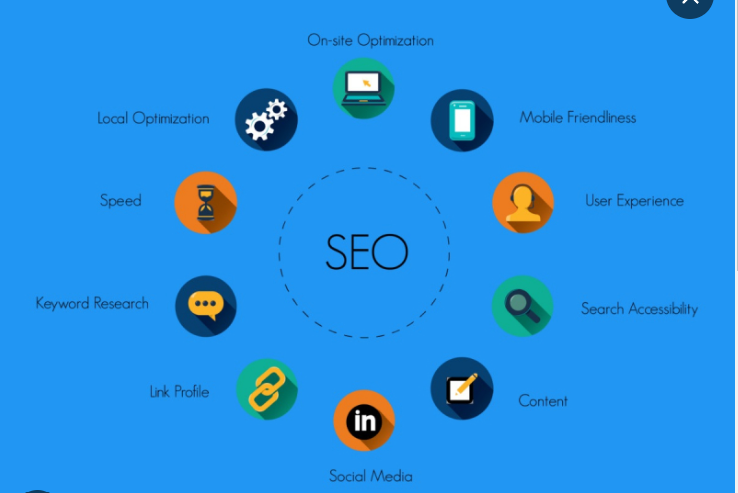
Q26. How does site speed affect SEO?
Site speed is an essential factor in SEO. A website that is loading slowly can cause higher bounce rates and lower user engagement, negatively impacting SEO performance. Additionally, search engines consider site speed a ranking factor and faster websites rank higher in search results.
Q27. What is Google PageRank?
Google PageRank was an algorithm used by Google to measure the authority of web pages over the quantity and quality of backlinks. While PageRank is no longer publicly updated, backlinks remain important in determining a page’s authority and ranking.
Q28. How do you approach keyword research?
Keyword research involves the following steps:
- Identify the main topics or themes related to your website or business
- Use keyword research tools to discover relevant keywords
- Analyse search volume, competition, and user intent for each keyword
- Prioritise keywords based on relevance and potential traffic
- Consider long-tail keywords and semantic variations
- Create content that matches user search intent and aligns with targeted keywords.
Q29. What is the difference between CTR and impressions in SEO?
CTR is called the ratio of users who click on a particular link or advertisement to the total number of impressions (views) it receives. Conversely, impressions refer to the number of times a webpage or advertisement is displayed to users.
Q30. How has Hummingbird altered the search landscape?
Hummingbird, introduced in 2013, has aided in contextualising search by allowing it to move away from rigid keyword adherence and towards understanding a searcher’s intent.
Q31. Describe PPC.
In the pay-per-click (PPC) advertising model, the publisher receives payment from the advertiser only when the ad is clicked. This increases website traffic; you only pay when visitors click on your advertisement.
Q32. What is the importance of content freshness in SEO?
Content freshness refers to regularly updating and adding new content to a website. It is crucial for SEO because search engines prioritise fresh and up-to-date content, especially for topics that require current information, news, or trends.
Q33. What is the impact of site architecture on SEO?
A well-structured site architecture improves user experience and facilitates website crawling and indexing by search engines. It also helps distribute authority and ranking signals to essential pages.
Q34. What connection exists between SEM and SEO?
The important difference between SEM and SEO is that SEO is a free organic strategy, whereas SEM is paid advertising methods like pay-per-click (PPC) and display ads.
Q35. Define canonical issues.
A canonical issue occurs when a webpage or website has multiple URLs that contain similar or identical content. These issues often arise due to improper redirects.
Q36. What are AMPs?
Accelerated Mobile Pages (AMP) is an open-source initiative primarily led by Twitter and Google. It aims to enhance the performance of mobile web pages by enabling lighter and faster-loading websites specifically designed for smartphones and tablets.
Q37. What is Domain Authority?
Domain Authority refers to the significance of a website in a particular subject area or market. It is a search engine ranking score developed by Moz. Domain Authority directly impacts a website’s ranking in search engine results, as search engines utilise automated analytic algorithms to evaluate a website’s domain authority.
Q38. What is a TLD?
The top-level domain (TLD), such as.com,.net,.org, or.co.in, is the last extension of an Internet address.
Q39. What is ccTLD?
The country code top-level domain (ccTLD), also known as the country code top-level domain in SEO, is a two-character domain extension set aside for a country. Here are a few ccTLD examples: For Italy, use. it, and for India, use. in.
Q40. What is PBN?
A network of websites known as a PBN, or private blog network, is created to link these blogs to a single website for SERP ranking purposes. It embodies black hat SEO.
Q41. What are SEO tools, exactly?
SEO tools evaluate a website’s performance and guide high placement on the SERP.
Q42. What is 301 redirection?
301 redirection aids in moving users and search engines to a new URL from an old one. Most of the link from the old website is transferred to the new page via a 301 redirect.
Q43. What is referral traffic?
Referral traffic refers to website visits that come from uncrawlable sources, such as links inside emails or social media.
Q44. What is Google's algorithm?
A set of guidelines, the Google algorithm, helps the search engine locate the internet results pertinent to a user’s search query.
Q45. What is E-A-T?
Google’s Quality Raters’ Guidelines reference the acronym E-A-T, which stands for Expertise, Authority, and Trustworthiness, to ensure that every website considers E-A-T while aiming for a high ranking.
Q46. What is Cross-linking?
Cross-linking is a way of connecting two websites.
Q47. Describe Google Fetch.
It is possible to check using Google Fetch whether a Googlebot can access a particular web page, how it is rendered, and whether any resources are blocked from the bot.
Q48. Describe Google Knowledge Graph.
Google Knowledge Graph displays a visually appealing and graphical depiction of information relevant to search queries on SERPs. It is a semantic search outcome that was compiled from several sources.
Q49. Why is RankBrain important?
As a component of Google’s Hummingbird algorithm, RankBrain analyses query searches to identify pages that might not contain the precise phrases entered.
Q50. What is the purpose of the BERT algorithm?
Bidirectional Encoder Representations from Transformers are known as BERT. It can manage various tasks, including parts-of-speech tagging, entity recognition, and question-answering.
Takeaway
Read through this guide to SEO interview questions before you attend your job interview. Your practical experience amalgamated with the informative Q&A will make it easier for you to succeed in the interview.
The PG Certificate in Digital Marketing & Growth IIM Visakhapatnam gives you the ideal opportunity to gain a deeper grasp of digital marketing. You can join this course via Jaro Education to grasp useful digital marketing skills through practical workshops led by expert business professionals.



